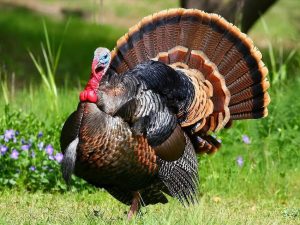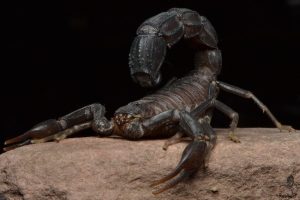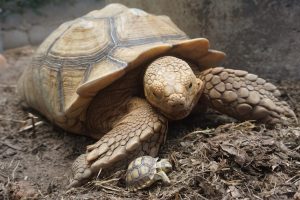The Blue-Tongued Skink is a gentle, easy-to-care-for reptile known for its unique blue tongue. It’s a popular choice for a pet. Let’s explore some interesting facts about this reptile in the following article from KnowAllAnimals.
Basic Information
- Scientific Name: Tiliqua genus
- Origin: Mainly Australia, with some species also in Indonesia and Papua New Guinea.
- Length: About 40–60 cm (16–24 inches) as an adult.
- Lifespan: 15–20 years with good care.
- Temperament: Gentle, docile, not aggressive – very popular as a pet.
- Diet: Omnivorous – including vegetables, fruits, insects, eggs, and occasionally small pieces of meat.
- Key Features: A large, strong body; smooth, shiny scales; a triangular head; and a blue tongue – which is a defense mechanism used when in danger.
1. Origin of the Blue-Tongued Skink
The Blue-Tongued Skink is native to northern, eastern, and southeastern Australia. While it belongs to the lizard family, it doesn’t like to climb like other lizards; it lives on the ground and prefers to hide in burrows or rotting logs.
Blue-tongued skinks are very friendly and approachable. They love to be petted and played with by humans. They are very intelligent and bond with their owners, so you can safely let them roam around the house without worrying about them getting lost. This reptile quickly became popular after being introduced to Vietnam. Many people keep them as pets and find them very interesting. The average lifespan of a Blue-Tongued Skink is around 20–25 years.

2. Characteristics of the Blue-Tongued Skink
The characteristics of the Blue-Tongued Skink are very easy to recognize: a large head, a long body, a rather heavy build, and short legs with five toes on each foot. Their most unique feature is their comical-looking blue tongue. When in danger, the blue-tongued skink will defend itself by detaching its tail from its body. However, the detached area does not bleed much.
Their back is a shiny gray or brown, and they have a dark horizontal stripe down their back. Their belly and neck are white, gray, or yellow. Their entire body is covered in glossy scales that overlap. A blue-tongued skink reproduces once a year, and the eggs are not laid but remain in the mother’s womb until the young are fully formed. Because of this, many people mistakenly believe that blue-tongued skinks give birth to live young.
3. A Guide to Caring for a Blue-Tongued Skink
Caring for a blue-tongued skink is fairly simple if you understand the basic requirements for their habitat, nutrition, and general care. Here’s a detailed guide to help you raise this reptile at home:
3.1. Enclosure
The enclosure for a blue-tongued skink can be a simple glass tank that is smooth, tall, and wide. A lid isn’t always necessary, as a tank taller than 30cm is usually enough to prevent them from escaping. The bottom should be lined with a 3–5cm layer of sand or pebbles.
It’s a good idea to place some plants, rock caves, or other hiding spots in the tank. Blue-tongued skinks are shy, so these spots are useful for resting and hiding. They may also bury themselves under the sand. To maintain humidity, you can mist the enclosure or place a bowl of water inside. Vets recommend using a small bowl so they can drink water at any time.
3.2. Temperature and Lighting
The ideal temperature for a blue-tongued skink is 28°C. It’s best to maintain a temperature of 26–32°C during the day and 22–24°C at night. They can handle large temperature differences and prefer a humidity level of 50–80%. In the morning, they like to come out and bask in the sun to warm up. Since they are cold-blooded animals, they need sunlight to increase their body temperature. Therefore, they need to be properly lit every day.
In general, they can get the energy they need from the morning sun. During the summer, they need to bask for 2–4 hours, and there should be a shaded area in the tank. In the spring and fall, they need to bask for 4–5 hours. If you are keeping your skink indoors, you should turn on a lamp for about 8 hours a day.
Use a heat source on winter nights and keep the temperature at 22–24°C. When the temperature drops below 14°C, they may hibernate. In this case, you should add more sand to the tank. The hibernation temperature should be kept above 0°C. Blue-tongued skinks come from semi-arid regions and require low humidity with good ventilation. A humidity level ranging from 40–60% is ideal. You can use a hygrometer to monitor the humidity level in the skink’s enclosure.
You should create a basking area to aid in digestion and help them maintain their body temperature. UVB light is essential for synthesizing Vitamin D3 and absorbing calcium (turn on the light for 10–12 hours a day).
3.3. Humidity and Water
Humidity: Around 40–60%. Lightly mist the enclosure if the air is too dry.
Water: Place a shallow water dish in the enclosure and change the water daily. Make sure the water is always clean.
3.4. Diet
Nature: Omnivorous
Meal plan:
- 50% vegetables: Carrots, pumpkin, kale, cabbage, green beans.
- 30% protein: Superworms, crickets, boiled eggs, cooked chicken.
- 20% fruits: Bananas, mangoes, watermelon (in moderation due to high sugar content).
Feeding schedule:
- Young skinks (<1 year): Feed every day.
- Adults: Feed every 2–3 days.
- Supplements: Sprinkle calcium powder (with or without D3) on their food 1–2 times a week.
3.5. Hygiene and Care
Cleaning the enclosure: Clean up waste every day, and change the substrate every 2–4 weeks.
Bathing: You can gently wipe them with a warm towel or soak them in shallow water to help with shedding.
Health checks: Monitor their eating habits, activity levels, skin, eyes, and droppings. If you notice they are lethargic, not eating, have diarrhea, or are swollen, you should take them to a vet.
3.6. Temperament and Taming
They are very gentle, friendly, and easy to handle.
They can be held and gently petted after they get used to you.
They do not bite unless they are very scared or provoked.
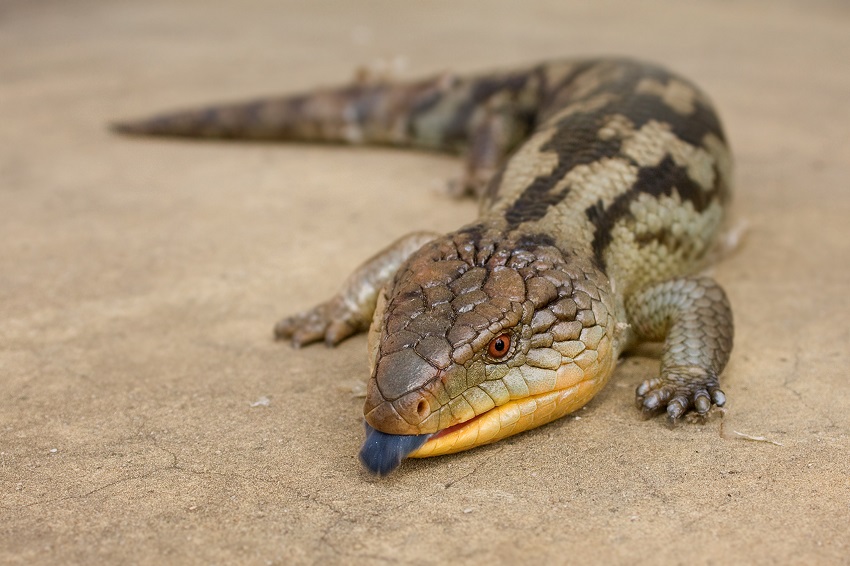
4. Essential Equipment for Caring for a Blue-Tongued Skink
Here is a list of basic supplies you should prepare when you start raising a blue-tongued skink as a pet:
4.1. Enclosure
Recommended size: 120x45x45 cm (length x width x height)
Type of enclosure: Glass, PVC, or ABS terrariums made specifically for reptiles
Ventilated lid: Stainless steel or plastic mesh with ventilation holes
4.2. Heating and Lighting Equipment
Basking lamp: Halogen lamp or ceramic heat emitter
UVB lamp: T5 HO fluorescent tube or a compact UVB 10.0 (mounted on the top of the enclosure)
Timer: To automatically turn the UVB light on and off
Thermometer & hygrometer: To monitor temperature and humidity
Dimmer or thermostat (if needed): To maintain a stable temperature
4.3. Substrate
Safe choices: Cypress mulch, compressed sawdust (repti chip), or clean newspaper (for new pets)
Avoid: Sand, pebbles, coconut coir (can cause impaction if ingested)
4.4. Enclosure Accessories
Shallow water dish: To be changed daily
Food bowl:
- Hideout: A place to hide to help them feel safe
- Log/rock: A basking spot
4.5. Food & Nutrition
Fresh food: Vegetables, fruits, protein (chicken, eggs, crickets, superworms)
Dry food (optional): Some types of dry food for omnivorous reptiles (e.g., Repashy Bluey Buffet)
Calcium powder: With and without D3 (alternate weekly)
Multivitamins: Use once a week (Reptivite, Herptivite, etc.)
4.6. Other Supplies
Feeding tongs
Misting spray bottle
Small brush / cleaning cloth
Carrier: For vet visits or traveling
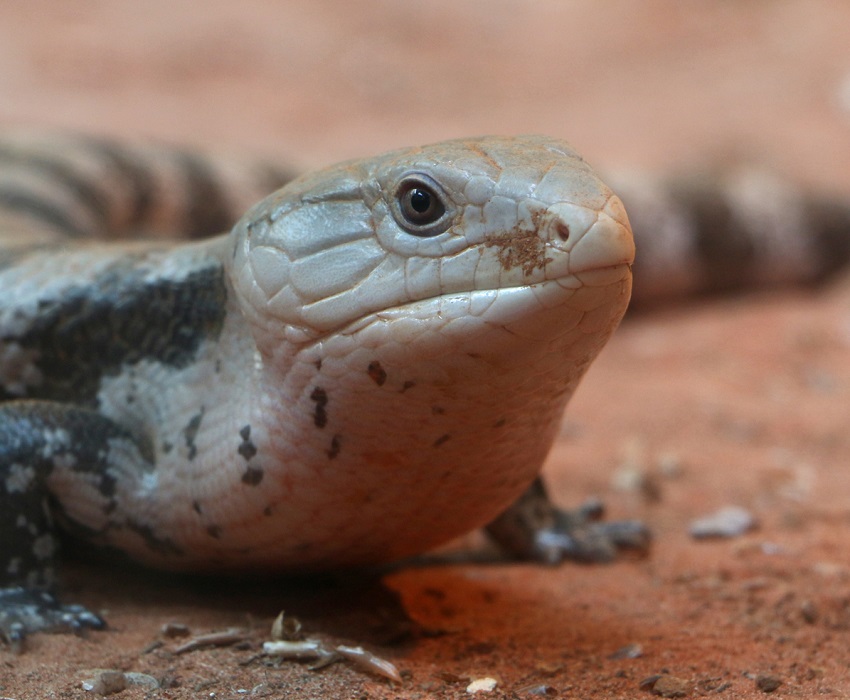
5. Common Diseases When Raising Blue-Tongued Skinks
Blue-tongued skinks are quite healthy and easy to care for, but they can still get certain common illnesses, especially if their enclosure or diet is not correct. Here are the common diseases, their signs, and how to prevent them:
5.1. Metabolic Bone Disease (MBD)
Cause: Calcium deficiency, lack of UVB light.
Signs: Soft jawbones, bent or weak legs, shaking limbs, lethargy, stiff joints, and difficulty moving.
Prevention:
Supplement their diet with calcium (with D3 if they don’t get natural UVB).
Use a strong UVB lamp (T5 HO 10.0) and replace it every 6–12 months.
5.2. Internal Parasites
Cause: A dirty substrate, contaminated food.
Signs: Loose stools, foul odor, stools stuck to the vent, rapid weight loss, and loss of appetite.
Prevention:
Keep the enclosure clean and change the substrate regularly.
Feed them clean vegetables and fresh water.
Deworm them regularly (as instructed by a reptile vet).
5.3. Respiratory Infections
Cause: Low temperatures, prolonged high humidity.
Signs: Breathing with an open mouth, runny nose, wheezing, not climbing, and lying still on the ground.
Prevention:
Keep the enclosure warm during the day (~30–35°C) and dry.
Do not spray too much water on the substrate.
5.4. Skin Fungus / External Infection
Cause: A damp enclosure, poor hygiene, or an incomplete shed.
Signs: Abnormal skin peeling, white or yellow patches, and a difficult shed with retained skin on the legs or toes.
Prevention:
Help with shedding by lightly misting or soaking in warm water when needed.
Keep the enclosure clean and dry.
5.5. Mouth Rot
Cause: Oral injury, infection from food or a hard object.
Signs: Foul-smelling mouth, redness and swelling, yellow or white discharge, loss of appetite, and an inability to close the mouth.
Prevention:
Avoid using sharp objects in the enclosure.
Keep the mouth clean and don’t let leftover food rot.
5.6. Eye Swelling / Eye Infection
Cause: Vitamin A deficiency, dusty substrate, infection.
Signs: Closed eyes, swelling, watery discharge, rubbing their eyes, and hiding in dark corners.
Prevention:
Supplement their diet with foods rich in Vitamin A (e.g., pumpkin, carrots).
Use a clean, non-dusty substrate.
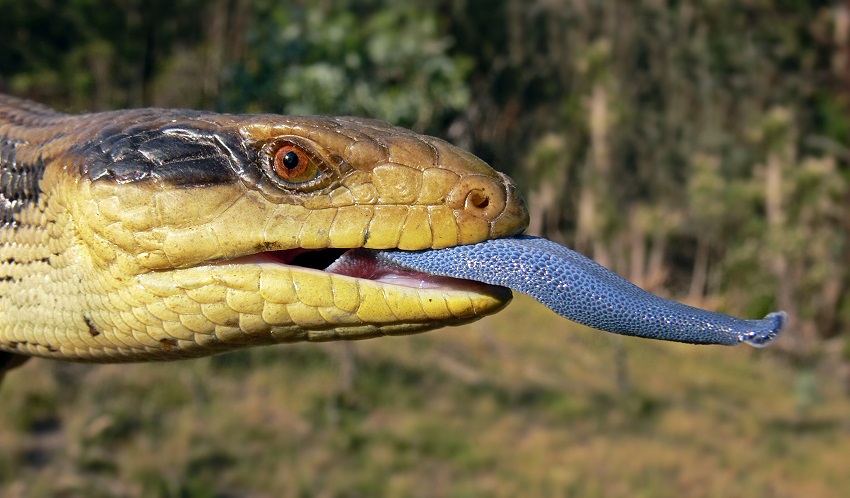
6. FAQs
1. What do blue-tongue lizards eat?
Blue-tongue lizards are omnivores, eating a mix of fruits, vegetables, insects, and small animals.
2. Where do blue-tongue lizards live in the wild?
They are native to Australia and New Guinea, commonly found in grasslands, forests, and suburban areas.
3. Are blue-tongue lizards good pets for beginners?
Yes, they are relatively easy to care for, have a calm temperament, and adapt well to captivity.
4. How long do blue-tongue lizards live?
In captivity, they can live 15–20 years with proper care.
Know All Animals has just shared a guide to the Blue-Tongued Skink, covering its origins, characteristics, and tips for effective care. Thank you very much for reading our article.
References: https://en.wikipedia.org/wiki/Blue-tongued_skink

